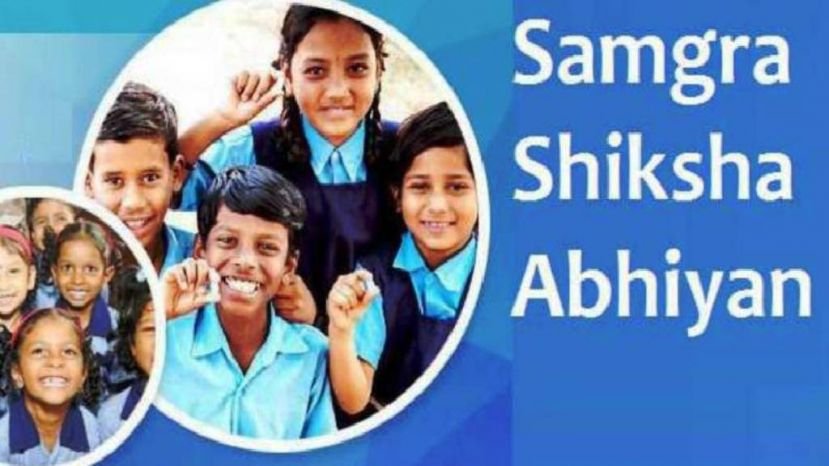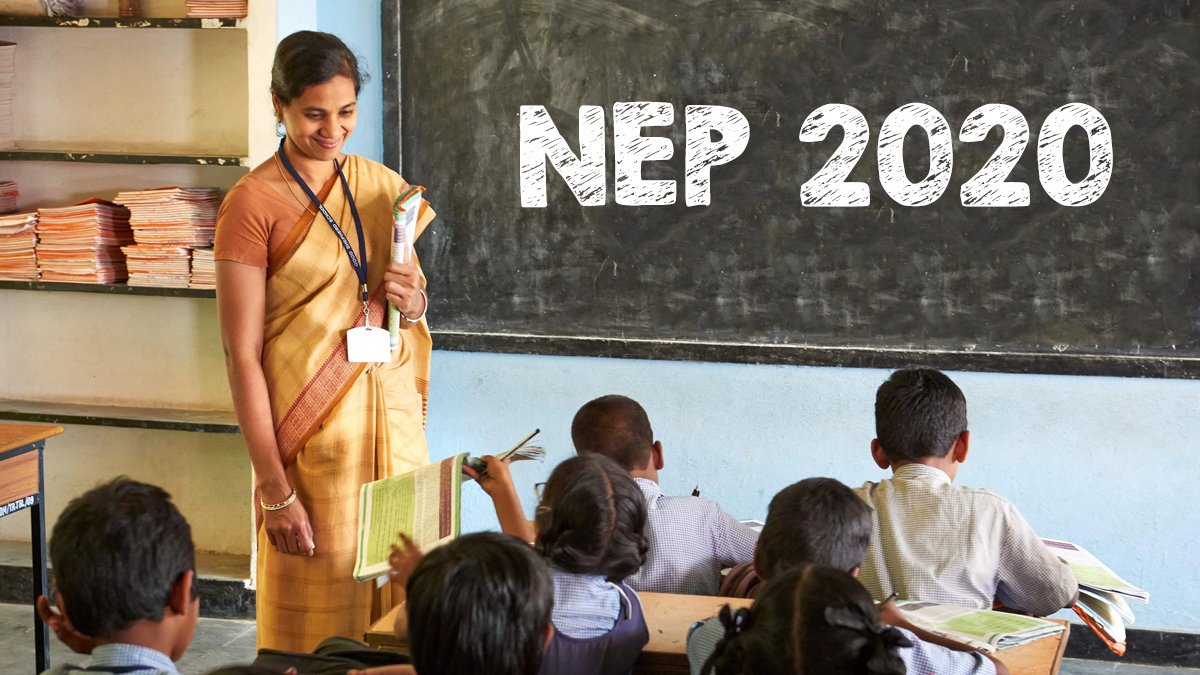By: Er. Prabhat Kishore
Samagra Shiksha, an overreaching program for the schooling sector extending from preschool to class 12, was launched on 1st April 2018 to treat school education holistically without segmentation from pre-nursery to class 12. It subsumed the three Schemes of Sarva Shiksha Abhiyan (SSA), Rashtriya Madhyamik Shiksha Abhiyan (RMSA), and Teacher Education (TE). The scheme has been extended up to FY 2025-26 and is fully aligned with the provisions of the National Education Policy, 2020.
Several transformational recommendations of NEP have been made part of the Samagra Shiksha scheme, which includes holistic progress cards, child tracking, bagless days, focus on SEDGs and out-of-school children, etc. To ensure the time-bound implementation of NEP, a comprehensive and task-oriented implementation plan called SARTHAQ has been released. Also, to ensure the universal acquisition of foundational literacy and numeracy, the National Initiative for Proficiency in Reading with Understanding and Numeracy (NIPUN Bharat) has been launched, so that every child achieves the desired learning competencies in Reading, Writing, and Numeracy at the end of grade-3, by 2026-27.
A decentralized Planning exercise based on measurable outcomes is being carried out with the involvement of all stakeholders so that the scheme is fruitful in achieving the ultimate goal. To achieve the desired objectives and outcomes of the schemes, a comprehensive action plan up to FY 2025-26 covering all the interventions of Samagra Shiksha is being prepared by all the states.
NIPUN Bharat portal is to be launched, which will have all the documents for the mission in one place. The focus will be on various interventions related to child-centric teaching-learning materials, play-based activities and supplementary graded materials, and resource materials for teachers to align their innovative pedagogies with learning outcomes, and grade level competency at the foundational level. The Lakshya (Targets) of Foundational Literacy and Numeracy is to be displayed on the walls of schools/classrooms for mass mobilization. Also, the Codified Learning outcomes for the Foundational stage will be intimated to the parents & teachers. In the next academic session, a 3-month play-based preparation module for Grade-I (Vidya Pravesh) will be adopted by all the schools.
To ensure 100% GER at all levels as envisaged in the NEP, adequate facilities for infrastructure and quality education at the secondary level will be targeted for universal access and quality education for the age group of 14-18 years. New secondary/Senior secondary schools will be opened in unserved localities based on GIS mapping. All secondary schools will be equipped with an integrated science lab and ICT/Smart classroom with an internet facility. Vocational education is to be planned in 50% of the composite secondary/Sr secondary schools. The drop-out rate at the Secondary level is quite high, primarily due to students’ inability to cope with the curriculum and high stakes associated with these classes. To tackle this situation, a 2-3 months School Readiness Module for children entering Grade IX will be adopted.
To ensure universal access and allow quality education to all children from pre-school to Grade-12, the opening of new/upgraded schools from pre-primary to class-12, the addition of new subjects in existing secondary schools, provision of an adequate number of classrooms & labs, rain-water harvesting, solar panel/electrification, barrier-free access, toilets, drinking water, hand washing facilities, incinerators & sanitary pad vending machines in all girl’s hostels, Classroom-com-workshop for vocational education, an extension of transport/escort facility up to secondary level, special training for out of school children of age-group 16 to 19 years belonging to SEDGs through open school system at secondary/Sr secondary stage will be made.
The covid-19 pandemic has hampered the education sector drastically due to the yearlong closure of schools and large-scale migration. Although various initiatives have been taken during the school closure to support the children; they require a bridge course to bridge the learning gap. Based on the findings of NAS, appropriate interventions are to be ensured in the schools. Further usage of DIKSHA (Digital Infrastructure for Knowledge Sharing), which enables education at home through innovative state programs, will be ensured. A100-day reading campaign for children from Bal Vatika to class VIII has already been initiated in January 2022.
As per NEP’s emphasis, age-appropriate enjoyable and inspirational books are to be ensured in the school library. The success stories and best practices, especially those adopted during the pandemic, are to be uploaded to the national repository for nationwide sharing among teachers/ students. NISHTHA training will be extended for teachers up to the secondary level and also to Anganwadi workers as well as educational administrators.
As NEP mandates 50 hrs of CPD every year to teachers, training need analysis for teachers will be conducted by SCERTs to customize training programs. The excess teachers presently available will be redeployed in needy schools before filling up the vacant posts. In most states, the PTR is better than the prescribed national norms; but there is a shortage of subject teachers, which will be taken into account at the time of recruitment. A suitable mechanism for an online and transparent system of recruitment as well as the transfer will be developed.
BRCs and CRCs will be developed as vibrant academic resource centers for training and onsite support to teachers and schools. All KGBVs will be upgraded up to class 12 in the next 3 years. Safety and security guidelines will be strictly enforced and its social audit will be done. Also, KGBVs will be equipped with ICT & SMART classes and will be enriched with library books through Library Grant. Activities will be planned to improve access, enrolment, retention, and learning outcomes of all disadvantaged groups and vulnerable children including girls, transgender, SC, ST, minorities, and migratory and urban deprived children. States will adopt & notify guidelines for fixing accountability of school management about the safety of children in schools. A comprehensive action plan is to be chalked out for the identification of children with special needs (CWSN), training of teachers, and availability of special educators, infrastructure creation, and ICT-inclusive programs.
To expedite vocational education, the construction of workshop/laboratory-cum-classroom, training modules for courses of entrepreneurship soft skills, etc. is to be done in upper primary schools. All upper primary, secondary and senior secondary schools will be covered with ICT and digital initiatives in a time-bound manner. Social Audit to cover 20% of schools per year is mandatory to monitor the implementation of schemes and ensure transparency & accountability. Special emphasis is to be given to Aspirational Districts, Special Focus Districts (SFD), Left Wing Extremism (LWE) districts, Educationally Backward Blocks (EBB), and SC/ST/Minority concentration districts.
For all Centrally Sponsored Schemes (CSS), the financial management system has been changed and a Single Nodal Agency (SNA) has been designated for each CSS for each state. The bank account of each SNA is to be opened and mapped in PFMS.
Samagra Shiksha will act as a vehicle for carrying out the recommendations of the National Education Policy 2020. Proper planning and implementation of interventions of Samagra Shiksha would help in achieving the objectives of providing quality education for all, in a time-bound manner and removing the bottlenecks currently available in the education sector. It will prove to be an efficacious weapon in transforming the nation as “Ek Bharat Shreshtha Bharat”. (The author is a technocrat & academician)







